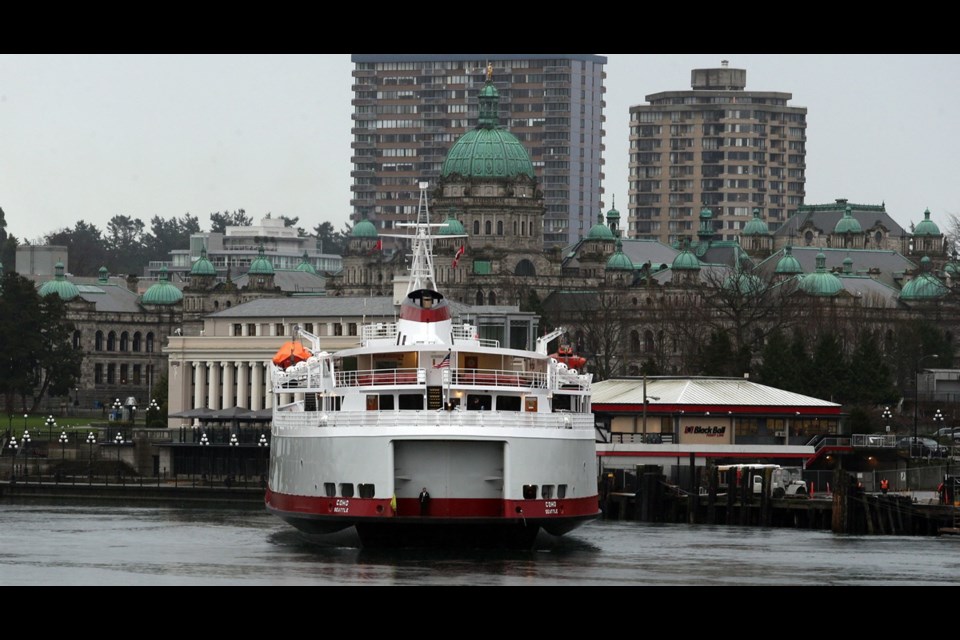The MV Coho sailed into work on Thursday, connecting Victoria and Port Angeles, Washington with little fuss despite the passing of its 57th birthday.
"I don’t know if [the birthday] is all that relevant,” said Ryan Burles, chief executive of Black Ball Ferry Line, the operator of the venerable vehicle and passenger ferry.
“But we’ve been fortunate to service this area and Port Angeles, and the ship is still in fine shape, so I guess it’s a nice reminder,” said Burles in an interview.
On Dec. 29, 1959, the MV Coho went into service crossing Juan de Fuca Strait. It was built in Seattle, specifically to serve as a car and passenger ferry running between the two cities. At the time, the vessel’s $3-million building cost made it the most expensive privately funded ferry in North America.
The ship was commissioned by Robert Acheson and his wife, Lois, who organized the company from a piece of the Black Ball Line.
Black Ball was a transport powerhouse in B.C. and Washington. But in 1961, it sold off most of its assets, including five vessels to the B.C. government for the newly created B.C. Ferries.
In 2004, Lois Acheson, who had run the company since her husband’s death in 1963, died. In her will, she left the company to Oregon State University. In 2012, the university sold the company to a team led by its executives.
Since the Coho first entered service, with the exception of yearly visits to dry dock for a refit, the ferry has motored back and forth between the two cities without missing hardly a day. Those yearly visits to a dry dock, scheduled for Jan. 17 to Feb. 3 in 2017, are what many credit for the Coho’s long-running service.
Burles said marine surveyors were put to work looking over the ship just prior to the last shift in ownership. And they pronounced the Coho had at least another 20 years of safe service left in her.
Burles said the Coho last year carried 410,000 passengers, up slightly from the financial crash year of 2008 when passengers were down to 405,000. That was a big drop from the 1990s, when the vessel was transporting about 530,000 passengers per year.
But the ship’s impact to both communities is substantial and ongoing. Burles said Port Angeles is working harder to diversify into tourism and believes the Coho will play a big part in that shift.
Meanwhile, he said a recently commissioned study pegged the Coho’s annual generation of dollars to Victoria and Vancouver Island to be $123 million.
That figure goes beyond just cars and passengers. It extends into freight, such as lumber and other goods, sent to the U.S. market. The Coho is the start of the quickest car link between Vancouver Island and California, said Burles. He agreed the Coho will eventually need to be replaced. But that won’t be anything close to necessary for at least another two decades.
“The ship is impeccably maintained and so there is no issue that says we need to replace her,” said Burles. “She is U.S. Coast Guard and transportation certified. She is doing a fine job.”
rwatts@timescolonist



